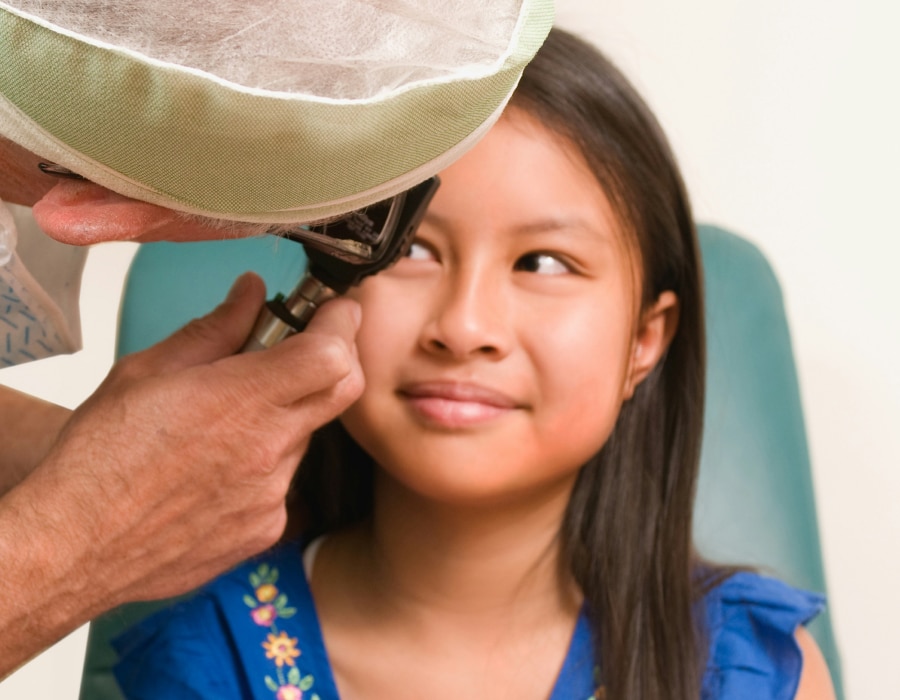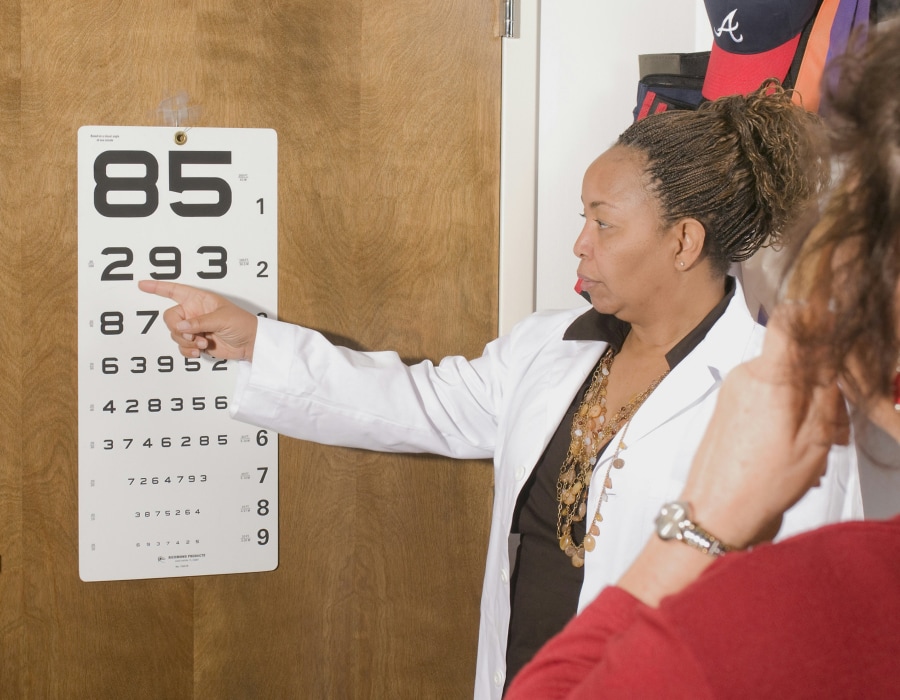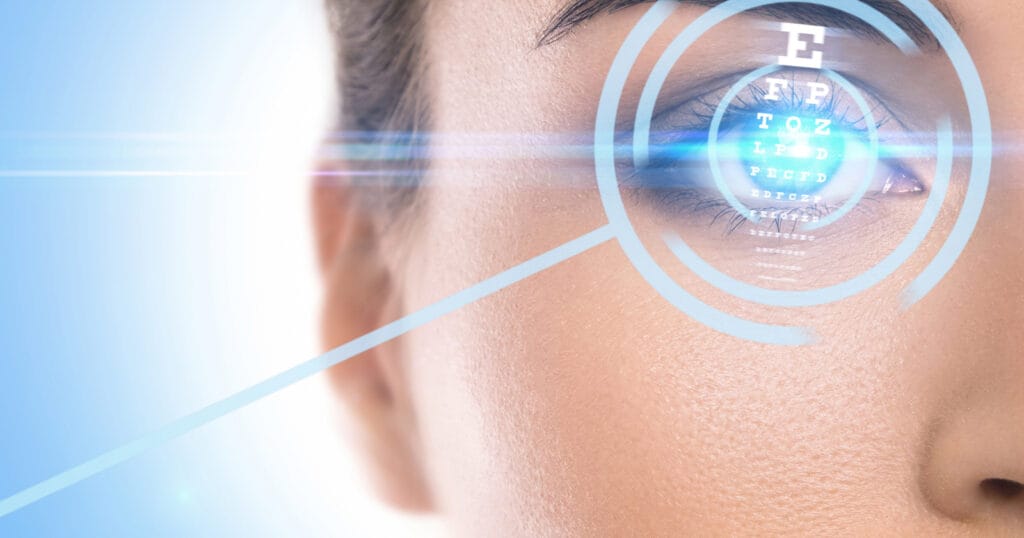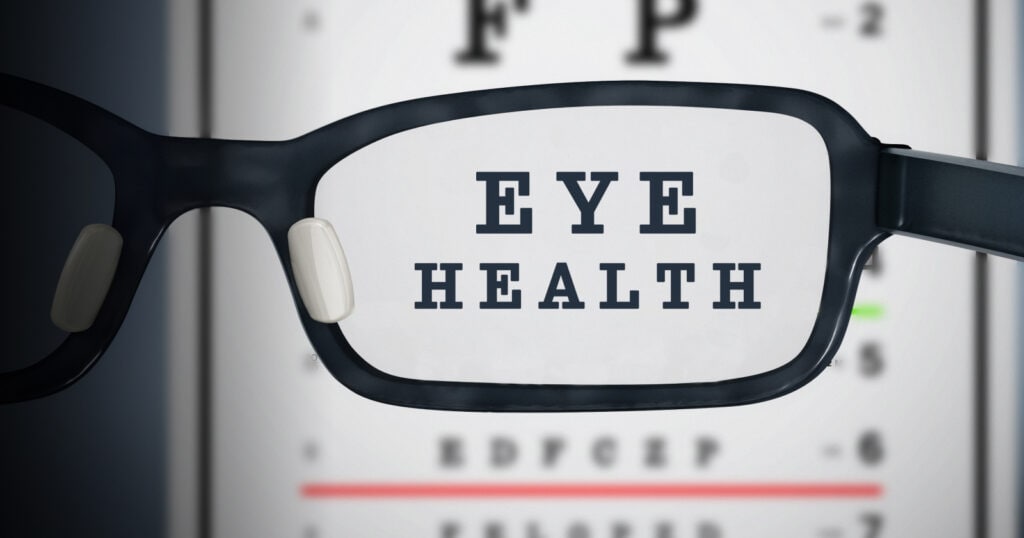Reviewed by Thomas Stokkermans, OD, PhD, FAAO on September 23, 2024
Eye exams are an essential part of maintaining good vision and overall eye health. Whether you’re due for a routine check-up or need a more detailed evaluation, knowing how long an eye test takes can help you plan your visit and understand what to expect.

How Long Does It Take for an Eye Test?
During a comprehensive eye exam, your eye doctor assesses your vision and eye health, taking a thorough look at your eyes inside and out. On average, an eye exam can take between 45 and 90 minutes to complete.
While you can expect the same routine testing at each of your annual eye exams, the length of your appointment may be affected if you:
- Have any forms to fill out when you arrive
- Need to talk to your eye doctor about any symptoms, concerns, or general health changes
- Need to have your eyes dilated for a more thorough examination
- Have a complex eye condition that requires additional evaluation
- Need a contact lens exam and fitting
- Want to shop for new glasses or prescription sunglasses in your eye care provider’s optical shop
Types of Eye Exams
Every patient has different eye care needs, so the overall time spent at the eye doctor’s office can vary for each individual and each visit.
Comprehensive Eye Exams
Routine, comprehensive exams offer a detailed examination of your vision and check for eye diseases. These are crucial for updating glasses or contact lens prescriptions. Such exams typically last 30 minutes to an hour, but some exams can last up to two hours.
Pediatric Eye Exams
Focused on the vision development of children and early detection of potential issues, pediatric exams are vital for ensuring children possess necessary visual skills for learning. These usually take about 30 minutes, though duration can vary based on the child’s age and cooperation.
Specialized Eye Exams
Specialized exams address specific concerns. For instance, individuals with diabetes should undergo a diabetic eye exam to check for retinopathy. These exams may take longer due to their detailed nature.

Factors That Can Make Your Eye Exam Take Longer
The type of eye exam significantly influences its duration. Routine exams tend to be shorter, while comprehensive and specialized exams require more time. Exams involving pupil dilation will add time since the optometrist needs a detailed view of the retina and optic nerve, along with time for the pupils to return to normal size.
Knowing which type of eye exam you need helps you better plan your visit. Whether it’s a quick check or a comprehensive exam, being informed aids in managing your schedule.
Eye Exam Tests
An eye exam is crucial for evaluating your vision and eye health, contributing to your overall well-being. Here’s what typically occurs during an exam:
- Refraction Test – This test determines your glasses or contact lens prescription. You’ll view a series of lenses through a phoropter and indicate which lenses make letters on a chart clearer.
- Eye Pressure Test – Also called tonometry, this test measures the pressure within your eyes. It’s crucial for detecting glaucoma, a disease that can lead to vision loss if untreated.
- Slit Lamp Test – This test involves using a microscope and bright light to examine the eye’s frontal parts, like the cornea, iris, and lens. It helps identify issues such as cataracts or corneal injuries.
- Visual Acuity Test – This measures how well you can see at various distances by having you read letters on a Snellen chart from a specified distance.
- Peripheral Vision Test – Through assessing your side vision, a peripheral vision test is essential for detecting conditions like glaucoma.
- Retinal Examination – The optometrist uses a lens to view the back of your eye in a retinal examination, checking for signs of damage or disease.
Eye Dilation
Eye dilation, which involves administering drops to widen your pupils, allows the optometrist to thoroughly examine the inside of your eyes. It’s beneficial for detecting retinal issues and other conditions. Not every exam requires dilation—it depends on factors like age, health, and eye health risks.
Dilation tends to take 15 to 30 minutes to take effect, leaving your eyes sensitive to light for a few hours. Plan for a longer exam if dilation is necessary.
Contact Lens Fitting
For those interested in contact lenses, a fitting is crucial. The optometrist measures your eyes to ensure the lenses fit properly and teaches you how to insert, remove, and care for them.
Fittings require extra time, especially if you’re new to contacts. You might test different lenses and need follow-up visits to ensure optimal comfort and clear vision.
Familiarity with these tests helps you prepare for your eye exam and maintain good vision.
Before and After the Eye Exam
When scheduling an eye exam, consider the time involved not only during the exam, but also beforehand and afterward. Understanding what to expect can help you organize your time efficiently.
Pre-Exam
Before your appointment, you’ll complete forms with personal information, medical history, and vision insurance details. Providing your family’s eye health history is also beneficial, enabling the optometrist to focus on your specific needs.
Post-Exam
Following the exam, you’ll discuss your results with your optometrist. This is an opportunity to ask questions and understand any recommendations. If needed, you’ll select glasses or contact lenses with the optometrist’s assistance to ensure they suit your lifestyle and vision requirements.
The optometrist plays a critical role throughout this process, ensuring everything runs smoothly. Be prepared for potential waiting, especially at busy practices. Being ready can make your visit more efficient and pleasant.

Common Questions About Eye Exams
Eye exams are vital for maintaining eye health. Many people have questions about their frequency and the signs that indicate a need for one. Here, we provide answers to common queries.
How Often Should You Schedule an Eye Exam?
How often you get eye exams can depend on your age, health, and risk factors. Adults should have an eye exam annually, even without risk factors. If you have conditions like diabetes or high blood pressure or have a family history of eye disease, more frequent exams may be necessary. Children should have their first eye exam between six and 12 months old, another before starting school, and then annually. Regular check-ups can detect vision problems early.
What Symptoms Indicate You Need an Eye Exam?
Certain symptoms suggest the need for an eye exam. Blurred vision, frequent headaches, squinting, or difficulty focusing on close objects may indicate a need for new glasses or the presence of an eye problem. Immediate attention is required for sudden vision loss, eye pain, or flashes of light. Regular eye exams can identify these issues early, facilitating treatment and protecting vision.
Why Are Eye Exams Important?
Eye exams do more than update your glasses or contact lens prescription—they identify serious eye conditions like glaucoma, cataracts, and macular degeneration. They can also reveal signs of other health issues, such as diabetes and high blood pressure, enabling early intervention. Regular eye exams preserve both vision and overall health.
Next Steps for Clearer Vision
A comprehensive eye exam is essential for maintaining healthy vision. Once you’ve completed your exam and received your updated prescription, you can explore affordable, stylish eyewear from Eyebuydirect. It’s never been easier to find glasses that suit your needs and style!







